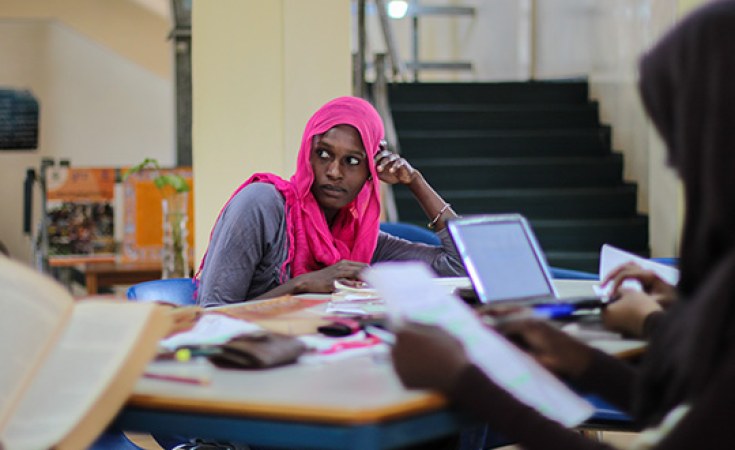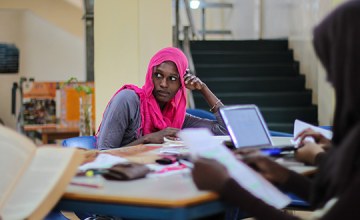Rural poverty is the main feature of poverty in North Africa and prevails mostly among women. Though rural women are key to the survival and management of the household, accessing productive resources in general still represents a persistent challenge for them.
With regard to the increasing growth of microfinance in rural areas, several studies and reports have shown the importance of women's access to financial resources since the nineties, but they have also highlighted the constraints and limitations these women are facing in this area. ECA - through its Office for North Africa - has contributed to research undertaken on this particular topic through the recent publication of a regional study entitled "Improving access to finance for the empowerment of rural women in Africa North: Best Practices and Lessons Learned." It covers Algeria, Egypt, Morocco and Tunisia.
There is empirical evidence that women are more likely ( than men) to spend more money on improving health and food for their household, as well as on the education of their children, as demonstrated by several studies conducted in Africa, Latin America and South Asia. It is stressed however that there are many challenges facing women in this area, including:
- Microfinance services remain almost limited to urban areas, much to the detriment of rural areas. They seem to have less impact on the poorest and most disadvantaged women simply because these cannot access them.
- The living conditions of rural women and their difficult access to basic social infrastructure (or lack thereof ) are major obstacles to their access to/ and control of financial resources.
- Women's access to more financial resources thanks to increased microfinance mechanisms and programmes remains uneven compared to men, and the loans they receive are often lower than those granted to male beneficiaries.
- Most of the services they resort to do not grant them loans that are large enough to buy assets such as land and houses. These loans often have to be secured or guaranteed by a male "tutor".
- Often, the designed funding services are not gender sensitive and hardly take into consideration women's specific needs or constraints.
These findings apply to a large extent to many North African countries, as underlined in the regional study undertaken by ECA North Africa Office , which provides a diagnosis of the disparities and discriminations rural women are facing to access funding. The study probes the various structural and institutional challenges marking this situation, which major characteristics are essentially:
1- Unequal access to productive resources
In developing countries including those in North Africa, rural women account for 43% of the workforce and provide the bulk of agricultural production. However, women have less access than men to productive resources, as well as employment opportunities. Only 20% of rural women own the land they cultivate and only 10% in North Africa. Furthermore, most rural workers are either unpaid family workers or self employed; and are thus exposed to precarious and poorly paid jobs.
2- All forms of difficult access to financial resources
Financial inclusion indicators in rural areas are very low, and women have almost no access to formal resources. Micro-finance institutions are the most frequent and are trying to adapt to the specific needs of the rural environment and that of women who live and work there. In rural areas, micro-credit remains the most important formal resource (except in Algeria, where financial systems are State governed). As underlined by the study, women's access to micro-credit varies from one country to another in the region. In Tunisia for example, women's access to rural micro-credit is different according to the two main players, microcredit associations (MCA) and ENDA. MCA beneficiaries among rural women are few, while ENDA credits beneficiaries make up for 65% of total beneficiaries. In Morocco and Egypt, access is uneven between women and men, and between urban and rural women, despite the significant progress microfinance has achieved in rural areas.
3- Uncertain impact of microfinance
Microfinance is supposed to have an impact that goes beyond the mere expansion of economic activity and consumption levels, and improve the living conditions of women and the level of their autonomy and mobility, as well as their ability to make decisions and to boost the education levels of their children. But based on some of the qualitative observations the study has identified, it appears that even though the financial resources helped increase household income and improve their living standards, it has a negative impact on women because:
- It does not allow savings and investments that could free women from credit, which cost is high, anyway;
- It does not change the social relations between men and women: on the contrary, women's workload has increased and men's financial participation has decreased, while they continue to hold power in the family.



